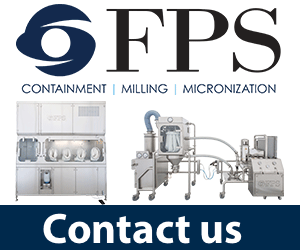Cleanroom specialist Gavin Cornall, from safety seal firm Roxtec, explains why increased focus on operational safety is encouraging labs to seek protection against leaks – particularly around the ‘Achilles heel’ of cable and pipe seals.
Laboratories are under enormous pressure to ensure the highest standards of health and safety. One of the biggest problems that they face is preventing leaks of harmful substances. Failure to prevent a leak carries swingeing punishments, including fines, legal action and the removal of a licence to operate. Furthermore, failing to prevent a leak risks high profile negative publicity. This damages an organisation’s credibility both within its sector and with the public and it could lead to the loss of business. For all these reasons it is essential that laboratories prioritise operational health and safety.
There are clear regulations to prevent the escape of dangerous and biological agents from contained rooms. These appear in the law covering the Control of Substances Hazardous to Health. This places a legal duty on operators of cleanrooms or labs to monitor and protect staff as well as the public from exposure to harmful substances.
Critically, the prime cause of leaks from cleanrooms and labs is the services entering the structure, via cable, pipe and duct. There is no doubt that maintaining an airtight and robust seal around cables and pipes is a formidable challenge for designers and engineers. The problem for designers of cleanrooms and contained rooms, and for those responsible for their upkeep, is that there may be a vast array of mechanical and electrical cables and pipes entering the room. The greater the number of service penetrations, the greater the risk of a leak. Moreover, the risk is constant. Simple checks or installing new cables or pipes can disturb existing seals, immediately increasing the risk of leak.
At the heart of the problem are the fumigants used in these rooms and the vital need for the rooms to remain airtight both in operation and during cleaning. Powerful cleaning chemicals are used, such as formaldehyde and vaporised hydrogen peroxide. The risk associated with exposure to these substances is so great that a robust sealing solution is essential.
So what can be done to maximise cable and pipe seal safety and maintain the all-important airtight integrity of the room? At Roxtec, sales tripled in 2009 in the cleanroom and laboratory sector. The company has been manufacturing cable and pipe seals since 1990.
As a global business with a €90m turnover, the company’s seals are used in a wide variety of industries to protect people and equipment from a range of hazards. The seals work by protecting cables and pipes from fire, water, chemicals, explosion, vermin, vibration and flooding – and critically the company’s seals also ensure airtight integrity. Due to confidentiality agreements, the company cannot mention clients by name but it is working in some of the most advanced and high profile cleanroom and contained sites in Britain.
The Roxtec product provides an alternative to mastic seals, which cannot offer the same level of protection or airtight integrity against hazards. Importantly, it reduces the number of cuts into a cleanroom’s structure and walls. The solution utilises Multidiameter, a Roxtec innovation that allows layers to be peeled from the sealing module to ensure a perfect fit to the cable or pipe every time. Multiple modules within one frame allow all services to be routed through a single opening leave in-built capacity for more cables and pipes if the room needs to be upgraded.
The solution can cover all cables and pipes passing into the lab areas, including power, data, lighting, communications, door entry, security, water, gas and drainage, where they pass through the containment structure. The value of having one opening for cables and pipes into a cleanroom cannot be overstated. Having one point of entry prevents the room from being disturbed with multiple cuts, which always risks dislodging existing cables and creating multiple potential leak paths. Furthermore, it saves an enormous number of man-hours for maintenance and installation.
The company has specialised in gas tight sealing of cables and pipes in hazardous ATEX rated environments for a number of years; the Roxtec system is certified for gas pressures of up to 2.5 bar and has been used to seal potentially explosive gas environments. The product is increasingly being utilised in ISO Class 3 and 4 containment rooms. Moreover, Roxtec's seals are one of only a few products capable of maintaining a gas tight seal in both negative and positive pressure environments.
In essence, the product works by tackling the Achilles heel of cleanroom and contained room design. The company specifically strengthens the weakest spot and most common source of leaks. The legal and commercial implications of getting it wrong are simply too severe not to provide a more robust solution in order actively to improve operational safety.
CONTACT Roxtec UK T +44 161 761 5280 Gavin.Cornall@uk.roxtec.com www.roxtec.com




